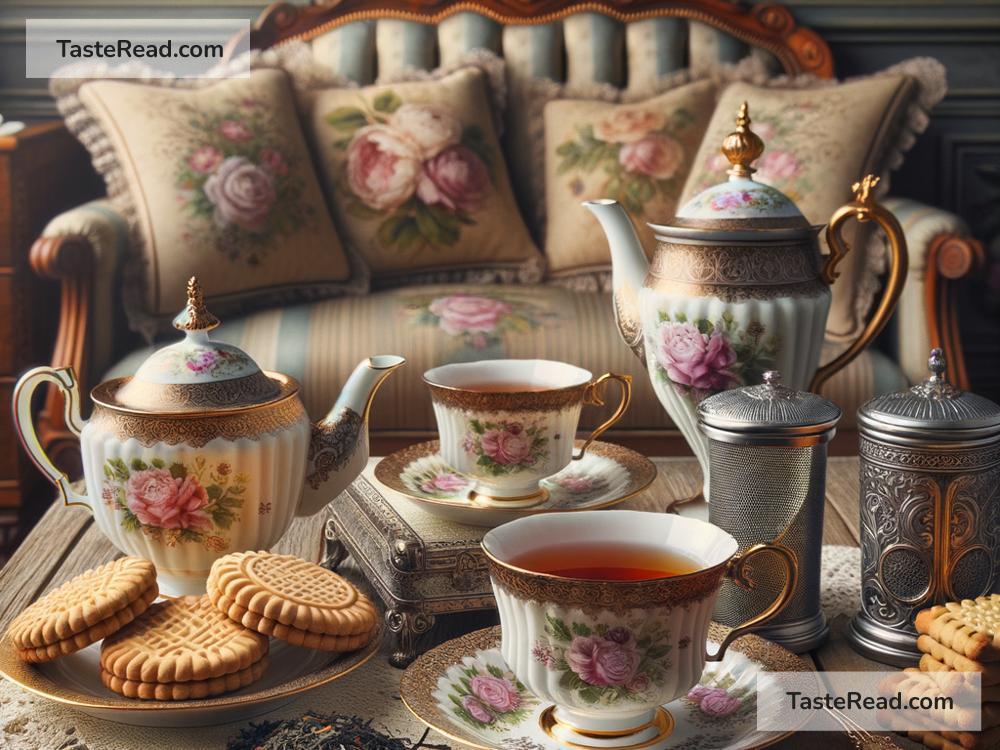The History of British Tea: A Story Steeped in Tradition
Tea is one of the most beloved beverages in the United Kingdom. It is hard to imagine Britain without its famous “cuppa,” whether it’s enjoyed in the morning, during an afternoon break, or to relax after a long day. But tea hasn’t always been part of British culture—it had to travel across the globe before it became the heart of British life. In this article, we’ll explore the fascinating history of tea in Britain, from its arrival centuries ago to its iconic status today.
Tea Arrives in Britain: A Royal Beginning
Tea first arrived in Britain in the mid-1600s. It came from China, where tea had been enjoyed for thousands of years. Initially, only the wealthiest people in Britain could afford it because it was very expensive. At the time, tea was sold by merchants who brought it on long voyages from Asia, so the cost was high.
The person who helped tea become popular in Britain was none other than a Portuguese princess—Catherine of Braganza. In 1662, she married King Charles II and became queen of England. Catherine was a big fan of drinking tea, and she brought this habit with her when she moved to Britain. Her love for tea soon caught on with the royal court and the upper classes. Before long, tea became a fashionable drink among wealthy Britons.
The East India Company and the Spread of Tea
As tea’s popularity grew, demand rose quickly. To supply tea, the East India Company—a powerful trading company based in Britain—began importing larger amounts directly from China. The East India Company played a major role in making tea more widely available in Britain. By the early 18th century, tea was no longer just a luxury for the rich; it had started to spread to middle-class homes.
One challenge for tea in these early years was its cost. It was still expensive, and heavy taxes on tea made it even pricier. Because of this, smuggling tea became common. Smugglers brought tea into Britain illegally to avoid paying taxes, allowing people to buy it for a lower price. This underground market for tea lasted until the government reduced tea taxes in the late 1700s.
The Birth of Afternoon Tea
Today, many people associate Britain with “afternoon tea”—a meal where tea is served with small sandwiches, scones, and cakes. This tradition began in the mid-19th century, thanks to Anna, the Duchess of Bedford. In those days, dinner was served quite late in the evening, leaving people hungry between lunch and dinner.
Anna came up with the idea of having tea and snacks in the afternoon to fill this gap. She invited her friends to join her, and the concept of “afternoon tea” quickly became popular among the upper classes. Soon, it spread across the country and became a cherished social ritual.
Tea and the Industrial Revolution
By the 19th century, tea had truly become part of everyday life in Britain. The Industrial Revolution played an important role in this change. As factory work became common, tea provided workers with a quick and affordable source of energy. It was easy to brew and helped people feel refreshed during long hours on the job.
Around this time, Britain’s tea supply also changed. While tea had originally come from China, the British began growing tea in India. The East India Company had established tea plantations in Assam and Darjeeling, regions with ideal climates for tea cultivation. Tea from India became a major part of Britain’s supply, and over time, Indian tea largely replaced Chinese tea in British markets.
Tea’s Role in British Culture
Tea is more than just a drink in Britain—it is a symbol of hospitality, comfort, and togetherness. Whether it’s served during a family gathering, a business meeting, or a moment of quiet reflection, tea is often at the center of British daily life.
During World War II, tea became even more important. The British government ensured that tea supplies remained steady, even during shortages, because it was seen as vital for keeping morale high. Soldiers carried tea with them, and communities bonded over shared cups of tea during difficult times.
Today, the love of tea continues in Britain. From classic black tea blends like Earl Grey and English Breakfast to herbal and fruit teas, there is something for everyone. Tea shops and cafes offer traditional afternoon tea experiences, while millions of people start their day with a hot mug of tea at home.
Conclusion
The history of British tea is a story of cultural exchange, innovation, and tradition. From its introduction by Portuguese royalty to its widespread popularity during the Industrial Revolution, tea has shaped the way people live, work, and socialize in Britain. Today, it remains an essential—and cherished—part of British life. So next time you enjoy a warm cup of tea, take a moment to appreciate the incredible journey that brought it to your table.


